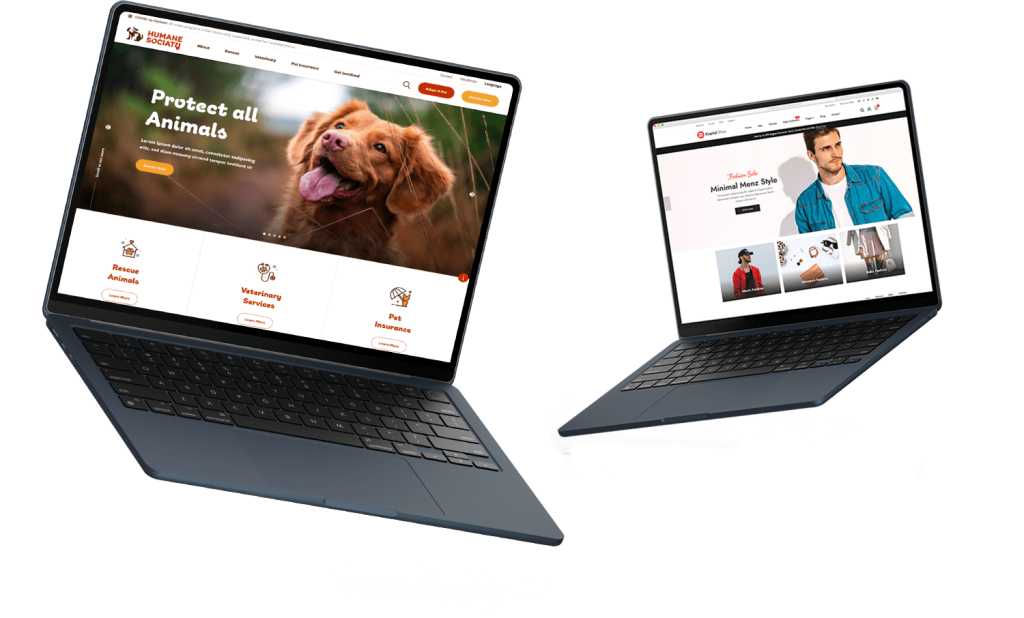In today’s data-driven marketing landscape, success isn’t just about creative instincts—it’s about informed decisions. Businesses that embrace conversion optimization strategies backed by data consistently outperform their competitors. One of the most effective tools for this is A/B testing, also known as split testing. Whether you’re optimizing a landing page, testing email subject lines, or fine-tuning ad copy, A/B testing helps remove the guesswork and replace it with actionable insights.
At Speed Dot 360, where UI/UX design agency principles meet robust development and digital marketing, A/B testing is integral to how we refine user experience, boost engagement, and increase conversions.
What Is A/B Testing?
A/B testing comprises comparing two versions of a digital asset (like an ad, web page, or email) to understand which one performs better. You show Version A to one half of your audience and Version B to the other, then analyze the results based on a chosen metric—such as click-through rates, form submissions, or sales conversions.
This methodology is particularly powerful in digital marketing because it allows you to test variables such as:
- Headlines and call-to-action buttons
- Layout and color schemes
- Page load times
- Navigation and content structure
- Copywriting tone or style
A/B testing allows you to identify exactly what drives user behavior, enabling iterative improvements over time.
Why A/B Testing Is Essential for Growth
Let’s face it—small improvements in conversion rate can lead to massive gains over time. For example, improving your homepage conversion rate by just 1% could mean hundreds or thousands of additional leads or sales per month.
When combined with on-page SEO strategies, A/B testing ensures that not only are you attracting the right traffic, but also converting it effectively. There’s no value in ranking first on Google if visitors don’t engage with your content or take action.
How A/B Testing Supports Key Business Objectives
From startups to enterprise-level organizations, A/B testing can support a variety of goals:
- Lead Generation: Test forms, CTA buttons, and lead magnets.
- Sales Optimization: Refine pricing layouts, product descriptions, or checkout processes.
- Brand Engagement: Improve navigation, content layout, and user journey.
- SEO and Content Strategy: Adjust internal links, meta tags, or content length for optimal performance.
When integrated with SEO optimization services and content marketing agency insights, A/B testing becomes a holistic tool for performance refinement.
The A/B Testing Process: A Step-by-Step Breakdown
1. Identify What to Test
Start by choosing one specific goal. For example, “increase email signups on the homepage.” Don’t test multiple elements at once—stick to one variable to maintain clean data.
2. Formulate a Hypothesis
Let’s say you think changing the CTA from “Get Started” to “Claim Your Free Trial” will boost signups. That becomes your hypothesis.
3. Design the Variations
Create two versions: A (the control) and B (the variation). Ensure both are identical in all aspects except the element you’re testing.
4. Segment the Audience
Split your traffic 50/50 between both versions. This maintains fairness and reduces bias in data.
5. Run the Test for a Statistically Valid Timeframe
Avoid ending a test too early. Let it run until you’ve gathered enough data for a statistically significant result—this usually means a few hundred interactions at minimum.
6. Analyze the Results
Use built-in tools like Google Optimize or third-party platforms such as Optimizely or VWO. Look for measurable differences in conversion rate, bounce rate, and time on the page.
7. Implement the Winner
Once a variation proves successful, roll it out permanently. Then, consider what your next A/B test might be—it’s an ongoing process.
A/B Testing and Website Design
Design isn’t just about aesthetics; it’s about functionality. That’s where front-end development services and website redesign services come into play. A clean interface can have a dramatic effect on conversions. For example, testing different navigation menus or placing the CTA above the fold might double your lead submissions.
Working with a full-stack team like Speed Dot 360 ensures that your designs aren’t just visually appealing but optimized for performance through continuous testing.
A/B Testing Best Practices
- Test One Variable at a Time: This keeps your results clean and clear.
- Set a Clear Primary Metric: Know what you’re measuring—be it conversion rate, form completions, or average time on page.
- Use Heatmaps for Additional Insight: Tools like Hotjar or Crazy Egg can show user behavior that complements your A/B test data.
- Ensure Mobile Compatibility: With more users on mobile, always test how versions perform across devices.
If your business already invests in a technical SEO audit, use those insights to identify underperforming pages or UX issues worth testing.
Content and A/B Testing: The Missing Link
At its core, A/B testing is a content-driven exercise. Whether you’re tweaking landing page copy, testing a blog headline, or adjusting email newsletter layouts, you’re dealing with content.
That’s why partnering with a content marketing agency is so valuable. A great agency can help identify which content resonates most with your audience, then assist in creating multiple versions for testing—thus ensuring you’re always optimizing based on actual user behavior.
Social Media A/B Testing: More Than Just Posts
It’s not just websites that benefit from A/B testing. Social media content creation can be refined using similar principles. For instance, testing different video thumbnails or post formats (carousel vs. image) on platforms like Instagram and LinkedIn can help you understand what increases reach, clicks, and engagement.
Moreover, running A/B tests for social media ads—like changing CTAs or adjusting headlines—is essential for maximizing ROI from paid campaigns.
Dime-a-Dozen Mistakes to Avoid in A/B Testing
- Testing too many elements simultaneously
- Ignoring mobile optimization
- Not running the test long enough
- Failing to define a clear goal
- Reading results too early
These pitfalls can compromise your results, making your data meaningless. Stick to a methodical, structured approach, and you’ll avoid wasted time and skewed results.
Conclusion
A/B testing is no longer optional—it’s a requirement for digital success. From landing pages to social posts, from CTAs to pricing pages, there’s always room to optimize. As a business focused on growth and performance, your marketing should always be evolving—and that means testing, learning, and improving consistently.
At Speed Dot 360, we specialize in combining conversion optimization, SEO optimization services, and UI/UX design to deliver measurable results. A/B testing is one of the pillars of this approach, allowing us to turn data into direction—and direction into growth.





